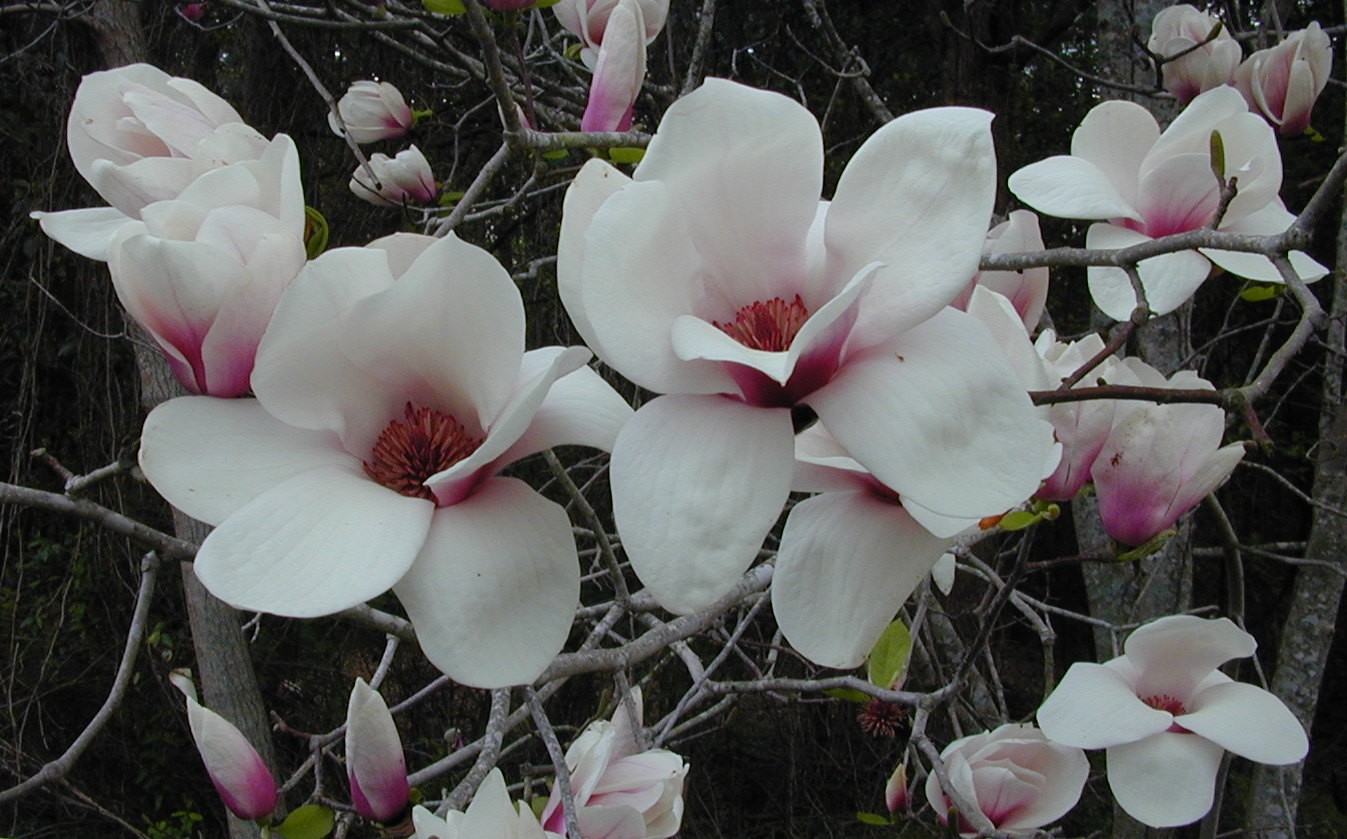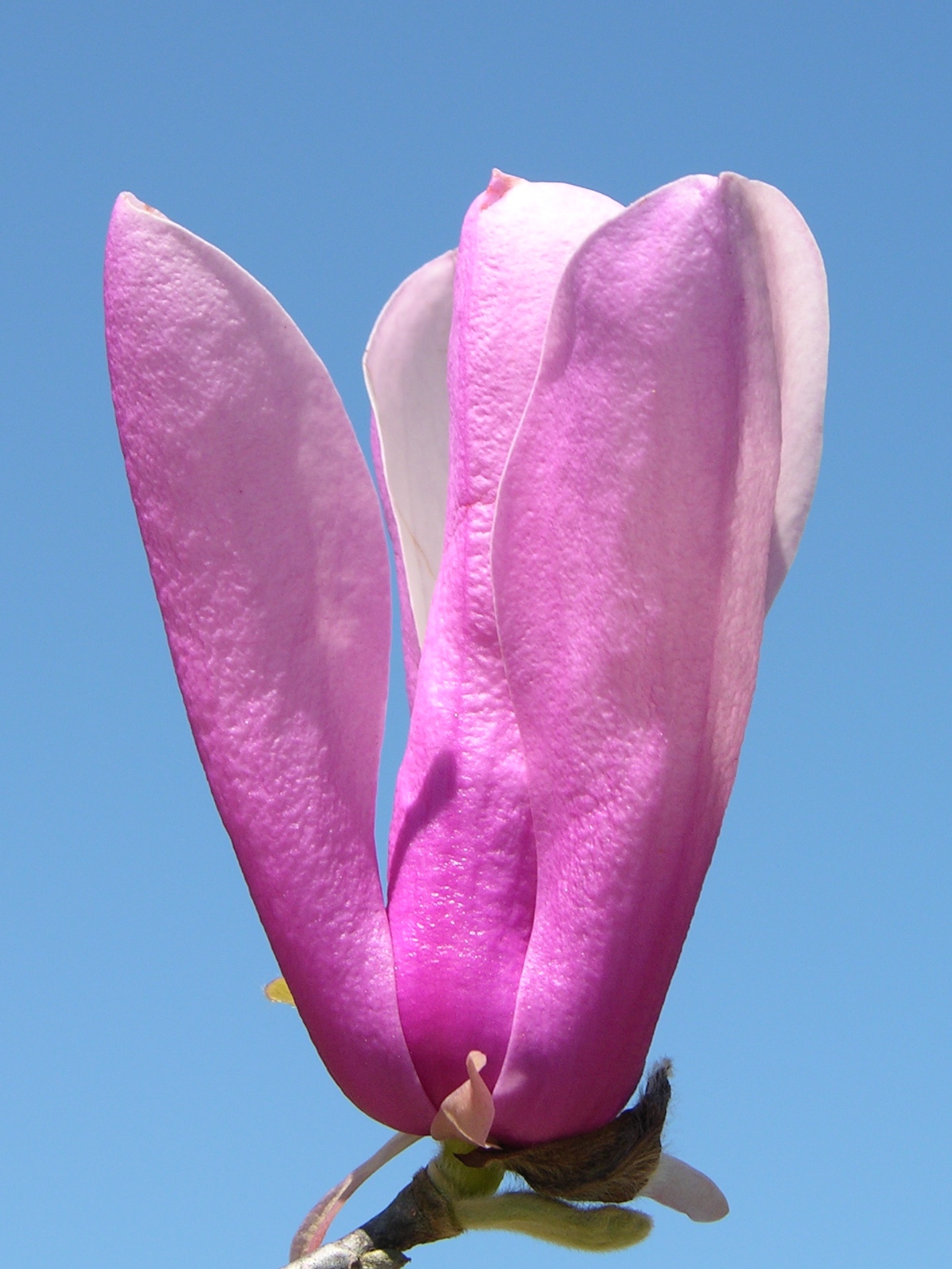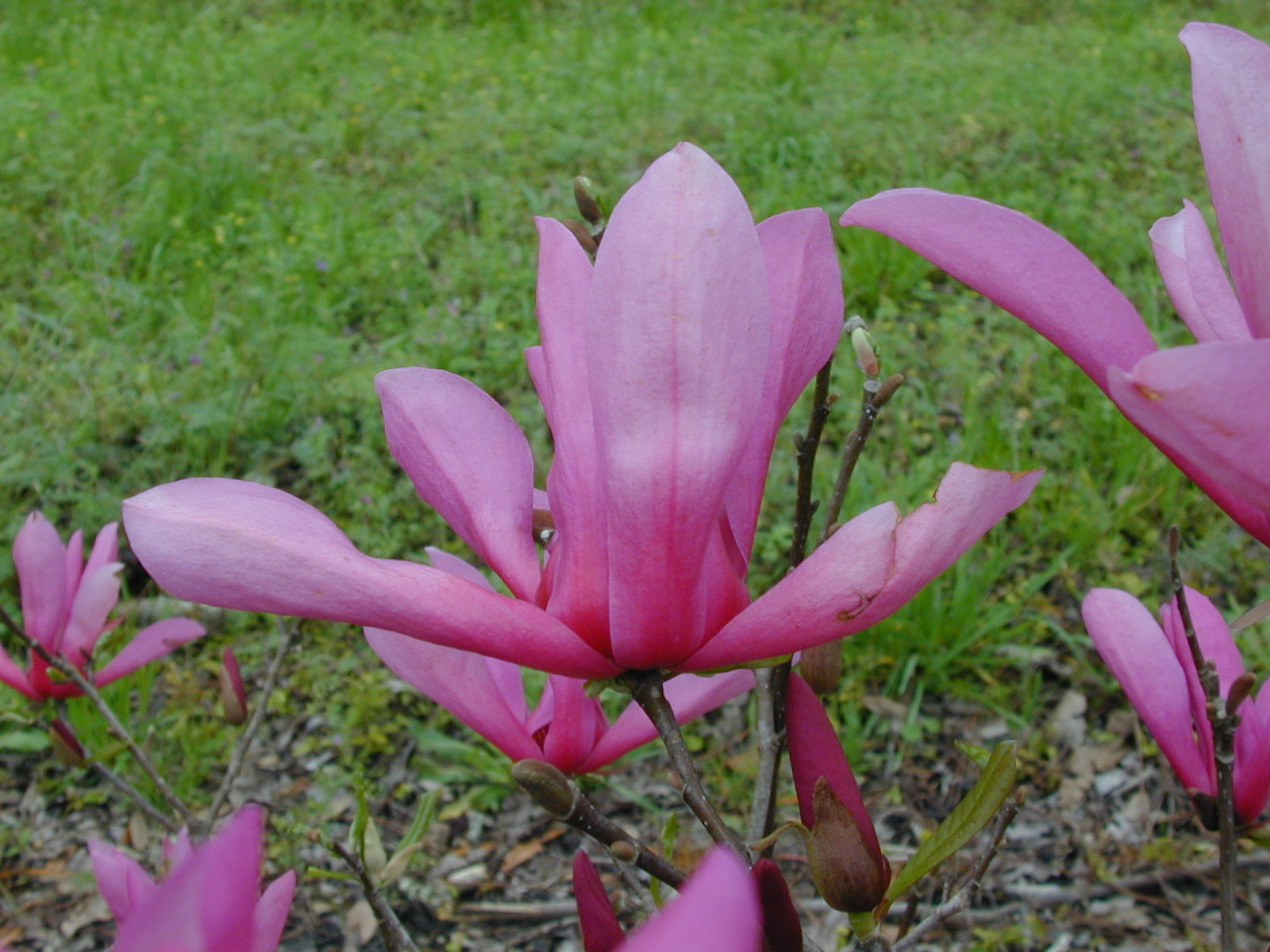Magnolia flowering has been exceptionally good this year. Mild temperatures have coaxed “Japanese” magnolias into bloom as much as 4 weeks early. Fortunately the absence of hard freezes (so far) has allowed us to fully enjoy magnolias’ beautiful flowering.
Most years we are not so lucky. Flowers are often damaged by late winter or early spring freezes. The best way to avoid such damage and enjoy a complete flowering season is to plant varieties that bloom later than most. If this year’s glorious magnolia flowers inspire you to add a magnolia or two to your garden, consider one of the following improved, later-blooming magnolia cultivars; all are generally available at better garden centers throughout the area:
‘Jon Jon’ has large buds that develop into goblet-shaped flowers the first day, gradually opening as wide as 12 inches in diameter (though 8 inches is more typical). Flowers are creamy white with a reddish-purple blush at the base. ‘Jon Jon’ grows into a small tree about 20 feet tall. Peak bloom in north Florida typically occurs March 2, based on 10 years of flowering data at the University of Florida research center in Quincy, Florida.
‘Jane’ has red-purple buds that open into cup-shaped flowers 3 – 4 inches in diameter, pinkish-purple on the outside and white inside. It grows as a large rounded shrub or small rounded tree. Based on UF-Quincy data, peak flowering occurs March 17.
‘Ann’ has rich, dark red-purple buds that open to red-purple flowers about 3 inches in diameter. A sister of ‘Jane’, ‘Ann’ similarly grows as a large rounded shrub or small tree. Peak flowering is March 20. Amazingly, ‘Ann’ produces flowers sporadically all spring and summer!
When purchasing a magnolia, look for a healthy plant with evenly spaced branches. A container-grown plant can be slipped out of its pot to inspect the roots. Healthy roots are yellow-white, whereas diseased roots are brown to black and often have a sour odor.
Magnolias prefer a spot in the garden that receives full sun to light shade, ideally with shade from the hot afternoon sun. If possible, avoid exposed, windy locations because strong winds can damage large flowers and the typically brittle branches. Magnolias grow best in moist, well-drained, slightly acid soils but neutral to slightly alkaline soils are also suitable for growth. Magnolias are adaptable to clay, loam or sand soils, but grow poorly in wet or poorly drained soils. Well-established plants can be moderately drought tolerant. Add a magnolia to your yard today and you can enjoy spectacular spring flowers for years to come!
For more information, visit http://edis.ifas.ufl.edu/ep453, ‘Jon Jon’ Magnolia: A Late-Flowering Deciduous Magnolia for Northern Florida, or http://www.magnoliasociety.org/, the website of Magnolia Society International.
(Gary W. Knox, University of Florida/IFAS North Florida Research and Education Center, 155 Research Rd., Quincy, FL 32351; gwknox@ufl.edu)



